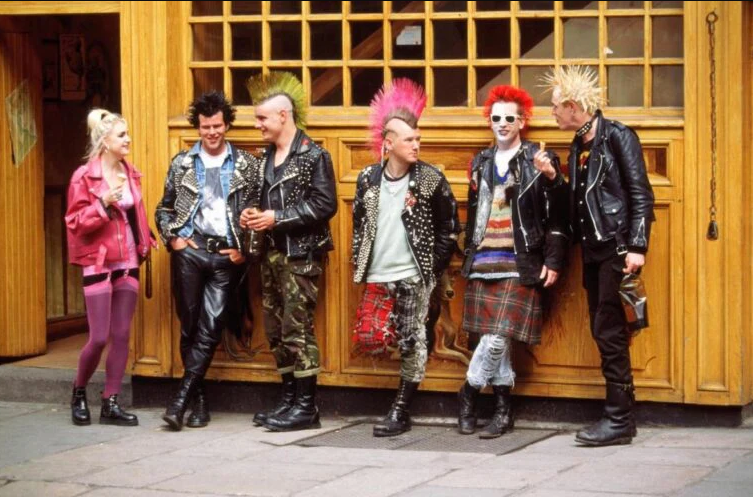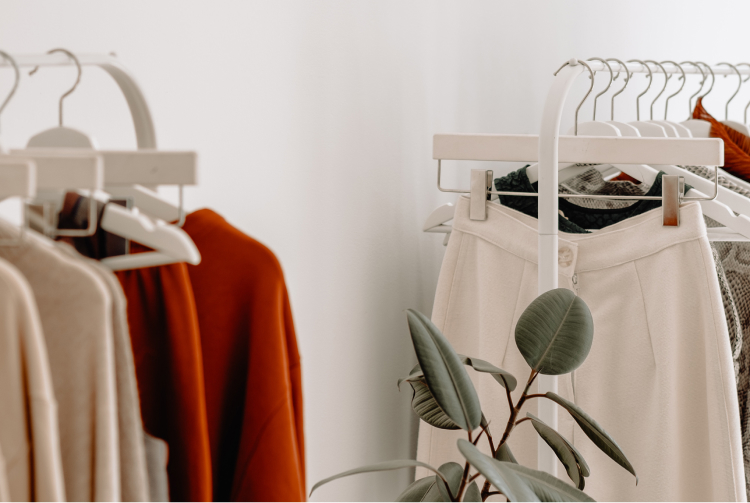The 1980s were loud. Not only in music or politics, but 80s Punk Fashion: The Explosive Style Movement as well.” Between neon leg warmers and shoulder pads, 80s punk fashion was a radical response to mainstream culture. Punk was a look, sure, but it was also an attitude, a rebellion, and self-expression rooted in the margins of society. Mohawks, leather, studs, ripped denim, and DIY aesthetics turned ordinary people into walking protests.
If this gritty, glorious subculture fascinates you, or you simply want inspiration for your next edgy ensemble, read on for a deep dive into the fashion of 80s punk — its origins, key elements, style icons, and lasting legacy.

The Punk Seeda (Late ’70s, Initial ’80s Pump)
Punk fashion began in the United Kingdom and the United States in the late 1970s as an anti-establishment response to the sleek disco styles and overly polished rock music. Groups such as the Sex Pistols, the Ramones, and the Clash weren’t only revolutionizing music — they were turning the fashion world upside down.
But 1980s punk fashion was truly explosive. As media visibility spread, street culture seeped through. Sub-genres like hardcore punk, anarcho-punk, and post-punk cropped up. The look was diversified, as long as it was anti-establishment.
The Aspects of 80s Punk Fashion
So, what exactly set 80s punk fashion apart from the rest? Let’s go through the basic elements that were hallmarks of the era.
The Leather Jacket: The Uniform of Rebellion
Without a black leather jacket, no punk wardrobe was complete. Usually embellished with studs, safety pins, band patches, and anarchist motifs, these jackets were DIY works of art.
- Why it mattered: A symbol of rebellion and toughness, borrowed from biker culture.
- Common customizations Include Hand-Painted slogans, spikes on shoulders, and painted sleeves.
2. Ripped & Distressed Denim
Forget neat jeans—80s punks shredded their denim. The more worn, torn, and patched, the better.
- Popular pairings: Denim vests with patches, tight skinny jeans, or cut-off shorts over fishnet tights.
- DIY attitude: Safety pins held rips together. Some even used duct tape.
3. Band Tees & Offensive Slogans
Whether it was a Sex Pistols shirt or something provocative scrawled across a tee in permanent marker, punks wore their politics (and playlists) on their chests.
- Notable designs: “God Save the Queen,” anti-police imagery, or nihilistic phrases.
- Custom work: Cutting sleeves, slashing the back, or layering with mesh.
4. Safety Pins: From Practical to Political
Originally used to hold torn clothes together, safety pins became a signature accessory of punk.
- Used in: Jackets, shirts, earrings, eyebrows, lips, and even cheeks.
- Symbolism: A rejection of polished fashion and a nod to survival and creativity.
5. Mohawks & Shaved Heads: Hairstyles with Attitude
Hair wasn’t just a style—it was a statement. The Mohawk became punk’s crowning glory, literally.
- Colors: Neon pink, green, blue—no hue was too loud.
- Application: Hair was often spiked with egg whites, glue, or industrial-strength hair spray.
Other styles included:
- Liberty spikes
- Shaved sides with dyed tops
- Dreadlocks (especially in crust punk scenes)
6. Combat Boots & Creepers
Footwear in 80s punk fashion was all about functionality and attitude.
- Combat boots (like Doc Martens): Ideal for mosh pits and daily rebellion.
- Creepers: Thick-soled shoes popular in the rockabilly-influenced psychobilly scene.
Some punks even wore platforms or old Converse, spray-painted and scribbled with slogans.
7. Studded Accessories & Spikes
Belts, chokers, wrist cuffs, gloves—you name it, they had studs or spikes on them.
- DIY trends: Many punks added their hardware to belts and jackets.
- Chokers & chains: Worn tight around the neck or hanging from jeans.
Sub-Genres & Their Signature Styles
Not all punks looked alike. Within the movement, sub-genres had their visual codes.
1. Hardcore Punk (U.S.-Based)
Focused more on minimalism and aggression.
- Style staples: Band shirts, cargo shorts, plain black hoodies, and sneakers.
- Hair: Buzz cuts, shaved heads.
- Example bands: Black Flag, Minor Threat.
2. Anarcho-Punk
Politically driven, anti-capitalist.
- Common features Include All-Black outfits, political patches, and anarchist symbols.
- DIY aesthetic: Clothes made or customized by hand, often second-hand.
3. Glam Punk / New Wave Punk
More colorful and fashion-forward.
- Looks: Makeup, glitter, mixed patterns.
- Influences: David Bowie, Siouxsie Sioux.
4. Crust Punk
The grimiest of all punks.
- Clothes: Layered, dirty, patched up.
- Accessories: Gas masks, chains, heavy boots.
- Lifestyle: Often nomadic, squatting, anti-consumerist.
Punk Icons Who Defined the ’80s Loo.k
Punk wouldn’t be punk without its pioneers. Here are a few figures who helped shape 80s punk fashion:
Vivienne Westwood
- The godmother of punk fashion.
- Ran the boutique “SEX” in London with Malcolm McLaren.
- Created designs worn by the Sex Pistols and inspired an entire generation.
Johnny Rotten (Sex Pistols)
- Master of offensive tees, torn clothes, and unkempt hair.
- His snarling presence embodied punk’s aggressive ethos.
Debbie Harry (Blondie)
- Mixed punk with glam and pop.
- Made leopard print, mini skirts, and graphic tees iconic.
Joey Ramone (The Ramones)
- Leather jacket, ripped jeans, and shaggy hair—classic NYC punk.
Siouxsie Sioux
- Pioneered gothic punk aesthetics.
- Known for dark makeup, teased hair, and fishnet everything.
DIY: The Heart of 80s Punk Fashion
If there’s one principle that defined 80s punk fashion, it’s Do It Yourself.
- Making your patches: Using fabric scraps and permanent markers.
- Hand-sewing outfits: Often with visible stitches or contrasting thread.
- Custom jackets: Studding, painting, or altering second-hand pieces.
This wasn’t just about style—it was a rejection of mass production and a celebration of individuality.
The Influence of 80s Punk Fashion Today
Though punk was born in rebellion, it was inevitably absorbed, at least in part, into mainstream culture.
In Modern Fashion:
- High-end designers like Alexander McQueen, Hedi Slimane, and Vivienne Westwood have punk-inspired collections.
- Punk revival trends show up every few years on runways and in streetwear.
In Pop Culture:
- TV shows like Stranger Things and Sex Education nod to 80s punk aesthetics.
- Punk’s ethos of DIY, rebellion, and expression has carried into Gen Z’s approach to fashion on platforms like TikTok and Instagram.
How to Wear 80s Punk Fashion Today
Want to try this bold style yourself? Here are some tips to rock 80s punk fashion in a modern world:
1. Start With Statement Pieces
- Invest in a quality leather jacket or vintage band tee.
- Add a pair of Doc Martens or spiked accessories to ground your look.
2. Mix Old & New
- Pair ripped jeans with a clean graphic tee.
- Add a modern layering piece—like flannel or an oversized hoodie—for added comfort.
3. Embrace DIY
- Customize your jacket or jeans with patches and pins.
- Experiment with hair colors and styles that echo punk spirit.
4. Be Bold & Fearless
- Punk is about breaking rules. Clash patterns. Mix textures. Rip something on purpose.
Conclusion: More Than a Trend, a Statement
80s punk fashion wasn’t about fitting in. It was about pushing back. It was rough, unapologetic, political, and powerful. From the scuffed-up boots to the towering mohawks, every element screamed for attention—and action.
Whether you’re embracing punk to make a statement, channeling it for aesthetic, or honoring its history, remember: punk isn’t just what you wear—it’s how you wear it.
FAQs About 80s Punk Fashion
1. What defined punk fashion in the 80s?
Studded leather jackets, ripped clothing, mohawks, DIY patches, band tees, and combat boots were the defining elements.
2. How is 80s punk fashion different from modern punk?
80s punk fashion was raw and more DIY-focused. Modern interpretations often blend punk aesthetics with other trends and are more commercially accessible.
3. Were there differences between UK and US punk styles?
Yes. UK punk was more political and often more flamboyant, while US punk, especially hardcore, leaned toward minimalism and practicality.
4. Can I wear punk fashion today without looking like I’m in costume?
Absolutely. Incorporate key punk pieces, like a leather jacket or spiked accessories, into your daily wardrobe, and keep the rest simple.
5. Who does punk fashion influence? Some designers.
Vivienne Westwood, Alexander McQueen, Hedi Slimane, and even Jean Paul Gaultier have punk influences in their work.
Welcome to our blog. We encourage you to get in touch. Contact us



